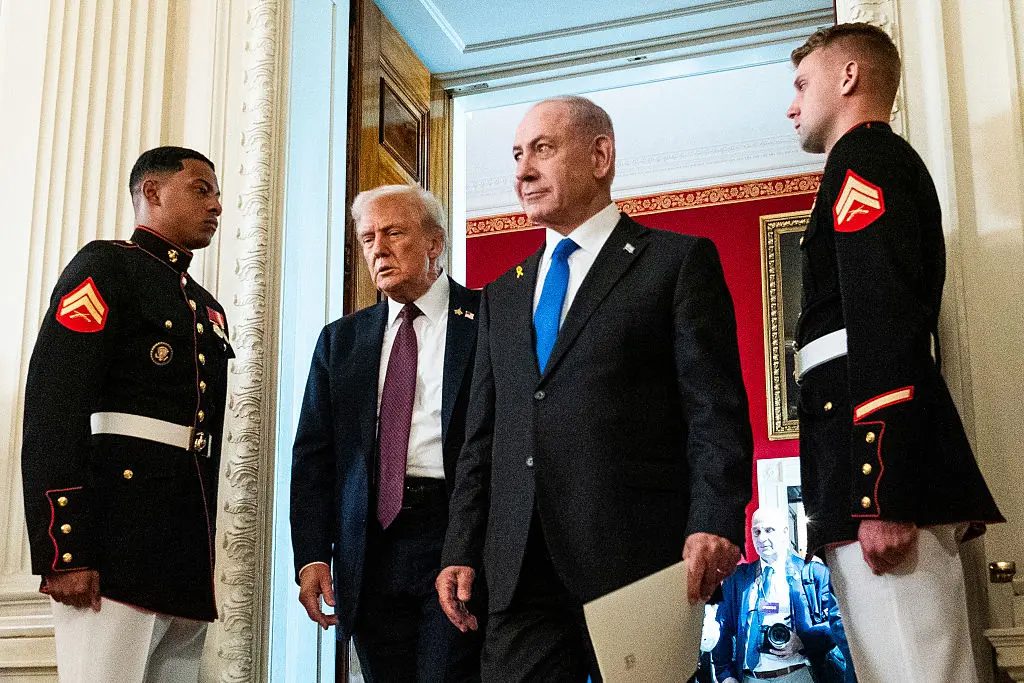Trump’s Gaza Plan: Aiming to Pressure Hamas
An Overview of the Proposal
Recently, former President Donald Trump unveiled a plan aimed at addressing the ongoing conflict in Gaza. This proposal comes amid heightened tensions and escalating violence, and it stands as an attempt to establish peace in a region fraught with complex political dynamics. Central to Trump’s plan is an assertion that Hamas must disarm, surrender, and release hostages. However, many analysts believe that the proposal may not be accepted and could be viewed more as a threat than a viable solution.
Key Components of the Plan
Disarmament of Hamas
A cornerstone of Trump’s strategy is the demand for Hamas to disarm. This aspect is seen by many as a pivotal step not only towards peace but also towards Israel’s security. The U.S. has consistently labeled Hamas a terrorist organization, which complicates the negotiations. Critics argue that this demand overlooks the reality on the ground and fails to address the historical grievances held by the Palestinian people.
Surrender and Negotiation
In addition to disarmament, Trump’s plan also suggests that Hamas must surrender any active resistance against Israel. This call for surrender raises questions about feasibility and fairness, especially considering the longstanding history of conflict and the deeply-rooted sentiments on both sides. The framework for such negotiations would need to include trust mechanisms that currently seem absent.
Release of Hostages
Trump’s plan also stipulates the need for Hamas to free all remaining hostages as part of its commitment to peace. This plea resonates emotionally with many, since countless families have been affected by the abduction of loved ones. However, the practical aspects of how such a release would occur remain unclear, given the high stakes involved.
Regional and Global Reactions
Local Response
The reaction to Trump’s Gaza plan in the Middle East has been mixed. Many Palestinian leaders have been dismissive, viewing the demands as unrealistic and heavily skewed in favor of Israel. This sentiment reflects a broader distrust towards U.S. proposals, which are often perceived as lacking genuine concern for Palestinian rights.
International Community’s Stance
Global reactions are equally diverse. Some U.S. allies in the region express cautious optimism, hoping that any engagement could lead to potential dialogue. Conversely, other nations and organizations have voiced outright condemnation, suggesting that the plan appears to prioritize punitive measures over genuine reconciliation.
Implications for Israel
Security Concerns
For Israel, the plan reinforces its commitment to national security. By pressing for Hamas’s disarmament, Trump underscores Israel’s long-standing narrative that a robust military presence is essential for peace. However, this perspective raises concerns about further entrenching the cycle of violence, as calls for greater military action could lead to escalating clashes.
Political Ramifications
On the political front, Israeli Prime Minister Benjamin Netanyahu has cautiously welcomed the plan, aligning with Trump’s tough stance against adversarial forces. Yet, critics within Israel argue that real peace cannot be achieved through coercion alone. Efforts must focus on understanding and addressing root causes rather than merely exerting pressure.
Underlying Historical Context
Brief Historical Background
The Israeli-Palestinian conflict has roots that extend back decades, making any recent proposal a mountain to climb. Understanding this historical context is crucial for grasping the complexities involved in the current situation. Issues like land ownership, refugees, and mutual recognition have remained unresolved, complicating any approach to peace.
The Role of International Stakeholders
International stakeholders, including the UN and EU, play a crucial role in mediating discussions. Their input could help shape more balanced approaches that take into account the aspirations and grievances of both sides. Trump’s plan, while attempting to exert pressure, risks alienating these important players if it fails to foster an environment conducive to negotiation.
Conclusion and Future Outlook
As Trump’s Gaza plan garners attention, it remains to be seen how it will influence the ongoing situation in the region. With the complexities of local and international politics at play, the road to lasting peace is fraught with obstacles. The demands for disarmament, surrender, and the release of hostages underscore a wrestling match between security and justice, as various stakeholders vie for a resolution.
In this challenging landscape, finding a middle ground that respects the rights and aspirations of all parties involved will be essential for genuine progress. The unfolding events will not only affect those directly involved but will resonate across the international community, shaping perceptions and futures in the wider Middle East.



